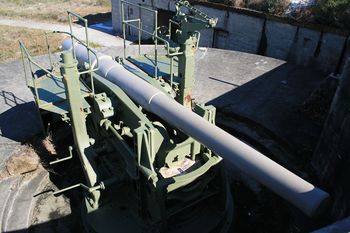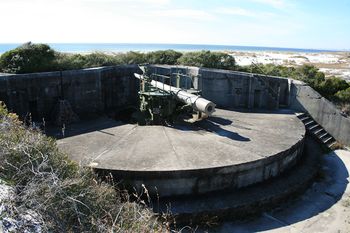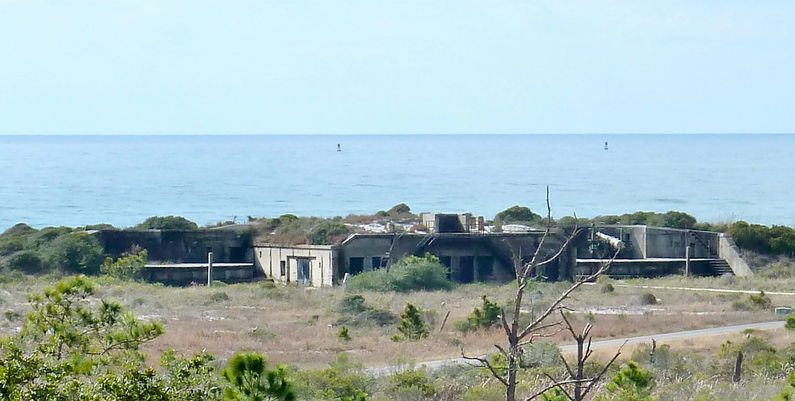Battery Cooper
|
Battery Cooper (1906-1917) - Battery Cooper was a reinforced concrete, Endicott Period 6 inch coastal gun battery on Fort Pickens, Escambia County, Florida. The battery was named in G.O. 194, 27 Dec 1904 after 2nd Lt. George A. Cooper, 15th U.S. Infantry, who was killed in action at Mavitac, Philippine Island on 17 Sep 1900. Battery construction started in Dec 1905, was completed 15 Aug 1906 and transferred to the Coast Artillery for use 15 Sep 1906 at a cost of $ 56,743.85. Deactivated in 1917.
Endicott Period (1890-1910)Part of the Harbor Defense of Pensacola. Originally built as an Endicott Period concrete coastal gun battery with two 6" M1903 rapid fire guns mounted on M1903 disappearing carriages. This is a two story battery with the guns mounted on the upper level and the magazines on the lower level. A common shell room and a common powder room serviced both emplacements. No powder or projectile hoists were installed. Electric power for lighting was supplied from the Battery Worth power plant via pole line until 1942 when a separate generator was installed.
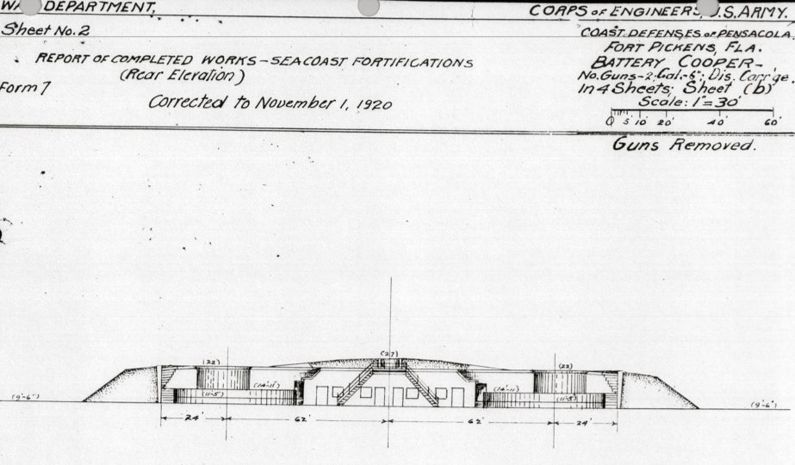 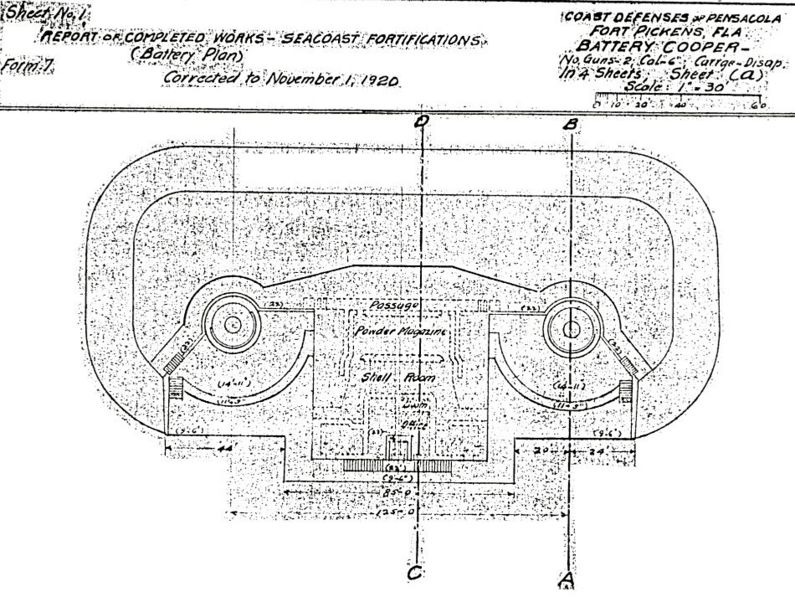
World War I (1917-1918)The U.S. entry into World War I resulted in a widespread removal of large caliber coastal defense gun tubes for service in Europe. Many of the gun and mortar tubes removed were sent to arsenals for modification and mounting on mobile carriages, both wheeled and railroad. Most of the removed gun tubes never made it to Europe and were either remounted or remained at the arsenals until needed elsewhere. Both Battery Cooper M1903 gun tubes were removed as a part of the World War II redistribution and shipped to Watervliet 17 Nov 1917 for modification. Both guns eventually made their way to France in July 1917 and were returned to the U.S. in May and Jun 1919 but they were not returned to Battery Cooper. The carriages remained in place until the 1920 disarmament program and they scrapped in May 1920. World War II (1941-1945)Starting in 1937 four circular concrete pads were constructed around Battery Cooper to mount 155mm GPF M1918 guns on mobile M1918 carriages in fixed positions. These four gun positions were designated Battery 155 - Fort Pickens and remained in operation until 5 Apr 1945. The Battery Cooper facilities were used for ammunition storage and support facilities. In 1942 generator #1 at Battery Pensacola was removed and reinstalled in Battery Cooper to support the four 155mm GPF guns. A separate 6 commode latrine was built and the B.C. Station was remodeled. Current StatusPart of the Gulf Islands National Seashore, Fort Pickens. In 1976, a 6" gun and carriage was transferred from West Point and mounted in emplacement #1 of Battery Cooper as a display piece. The breech block is missing from the display gun.
Sources:
Links: Visited: 8 Oct 2021, 16 Dec 2009 Picture Gallery
| ||||||||||||||||||||||||||||||||||||||||||||||
